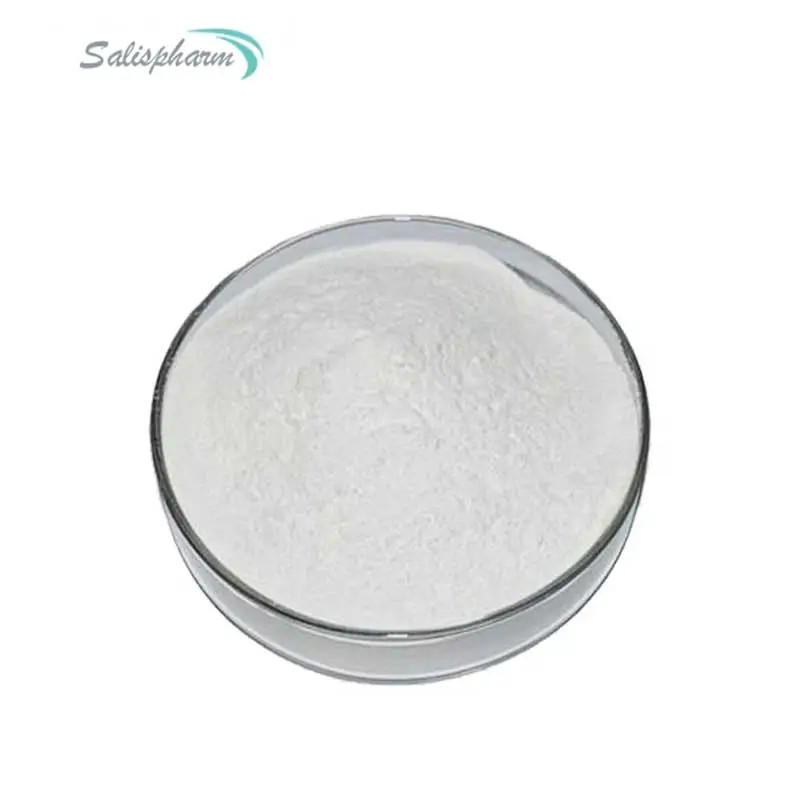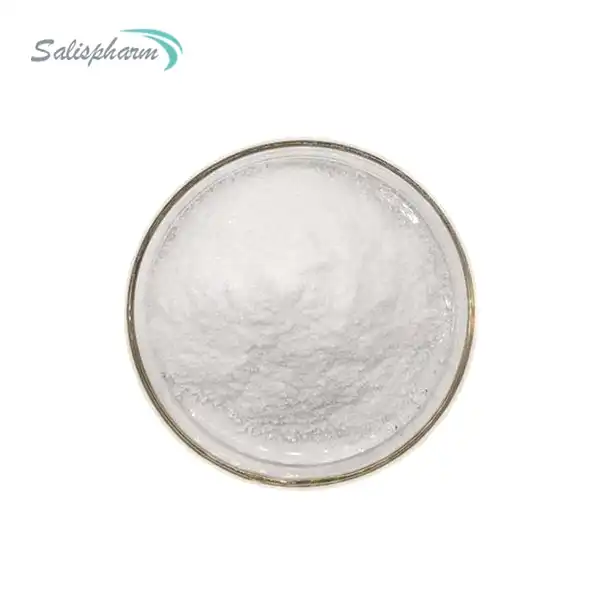Clotrimazole powder is a widely used antifungal medication that has been on the market for decades. It's primarily used to treat various fungal infections, including athlete's foot, jock itch, and ringworm. While it's generally considered safe for most people when used as directed, it's important to understand its proper use, potential side effects, and when to seek medical advice. This blog post will explore the safety and efficacy of clotrimazole powder, addressing common questions and concerns.
How does clotrimazole powder work to treat fungal infections?
Clotrimazole powder is an azole antifungal medication that works by disrupting the fungal cell membrane. This action prevents the fungus from growing and reproducing, ultimately leading to its death. The mechanism of action is quite specific, which is why clotrimazole is effective against a wide range of fungal infections but doesn't harm human cells.
When applied to the affected area, the powder form of clotrimazole offers several advantages. First, it helps keep the area dry, which is crucial in managing fungal infections as these organisms thrive in moist environments. The powder formulation also allows for easy application to large or hard-to-reach areas, such as between toes or in skin folds.
Clotrimazole powder typically starts working immediately upon application. However, it's important to note that while symptoms may begin to improve within a few days, complete resolution of the infection often requires continuous use for several weeks. This extended treatment period ensures that all fungal cells are eliminated, reducing the risk of recurrence.
The effectiveness of clotrimazole powder has been demonstrated in numerous clinical studies. For instance, a study published in the Journal of Clinical and Aesthetic Dermatology found that clotrimazole was effective in treating tinea pedis (athlete's foot) in over 90% of cases when used as directed for four weeks.
It's worth noting that while clotrimazole powder is highly effective against many common fungal infections, it may not be suitable for all types of fungal growths. Some more resistant strains or deeper infections may require oral antifungal medications or different treatment approaches. This is why it's important to consult with a healthcare provider if symptoms persist or worsen despite treatment.
What are the potential side effects of using clotrimazole powder?
While clotrimazole powder is generally well-tolerated, like all medications, it can cause side effects in some individuals. Understanding these potential side effects is crucial for safe and effective use.
The most common side effects of clotrimazole powder are local skin reactions. These may include:
1. Mild burning or stinging sensation upon application
2. Redness or irritation of the treated area
3. Itching or rash
4. Peeling or flaking of the skin
These side effects are usually mild and tend to resolve on their own as treatment continues. However, if these symptoms persist or become severe, it's advisable to discontinue use and consult a healthcare provider.
In rare cases, more serious side effects can occur. These may include:
1. Severe allergic reactions (anaphylaxis)
2. Blistering or oozing of the skin
3. Swelling of the face, lips, tongue, or throat
4. Difficulty breathing
If any of these serious side effects occur, it's crucial to seek immediate medical attention.
It's important to note that the risk of side effects can be minimized by using the medication as directed. This includes applying only the recommended amount, avoiding application to broken or irritated skin, and not using the product for longer than prescribed without medical advice.
Certain individuals may be at higher risk of experiencing side effects. These include:
1. People with a history of allergic reactions to azole antifungals
2. Those with compromised immune systems
3. Pregnant or breastfeeding women (although clotrimazole is generally considered safe during pregnancy, it's always best to consult with a healthcare provider)
A study published in the Journal of Clinical Pharmacy and Therapeutics found that adverse events associated with topical clotrimazole use were reported in less than 1% of cases, with most being mild and self-limiting.
It's also worth noting that clotrimazole powder may interact with other medications or medical conditions. For instance, it may reduce the effectiveness of latex products such as condoms or diaphragms. Therefore, it's important to inform your healthcare provider about all medications and supplements you're taking before using clotrimazole powder.
When should you see a doctor instead of using over-the-counter clotrimazole powder?
While clotrimazole powder is available over-the-counter and is effective for many common fungal infections, there are situations where it's crucial to consult a healthcare provider instead of self-treating.
Firstly, if you're unsure about the cause of your symptoms, it's best to seek medical advice. Many skin conditions can mimic fungal infections, including bacterial infections, eczema, or psoriasis. Misdiagnosis and incorrect treatment can lead to worsening of symptoms or delayed proper treatment.
You should also see a doctor if:
1. Your symptoms persist or worsen after a week of using clotrimazole powder
2. The infection appears to be spreading despite treatment
3. You have diabetes or a weakened immune system
4. The infection is on your scalp or nails
5. You're pregnant or breastfeeding
6. You experience severe itching, burning, or other discomfort
7. The affected area becomes swollen, warm, or shows signs of bacterial infection (such as pus or red streaks)
8. You have recurring fungal infections
In these cases, a healthcare provider can perform a proper diagnosis, which may involve taking a skin scraping or culture to identify the specific pathogen. They can then prescribe the most appropriate treatment, which might include stronger antifungal medications, oral treatments, or a combination therapy.
It's particularly important for individuals with diabetes or compromised immune systems to seek medical advice for fungal infections. These conditions can make fungal infections more severe and difficult to treat. Additionally, people with these conditions are at higher risk of developing secondary bacterial infections.
For nail infections (onychomycosis), over-the-counter treatments like clotrimazole powder are often not effective. These infections typically require oral antifungal medications or specialized topical treatments that can penetrate the nail bed.
Scalp infections, such as tinea capitis, also require different treatment approaches. These infections often need oral antifungal medications and medicated shampoos to effectively clear the infection and prevent spread.
Pregnant women should always consult with their healthcare provider before using any medication, including over-the-counter treatments like clotrimazole powder. While clotrimazole is generally considered safe during pregnancy, individual circumstances may warrant different treatment approaches.
A study published in the American Family Physician journal emphasized the importance of proper diagnosis in skin conditions, noting that up to 50% of patients who self-diagnose fungal infections may be incorrect. This underscores the value of professional medical advice in ensuring appropriate treatment.
In conclusion, while clotrimazole powder is a safe and effective treatment for many common fungal infections, it's not a one-size-fits-all solution. Understanding its proper use, potential side effects, and limitations is crucial for optimal treatment outcomes. When in doubt, or if symptoms persist, worsen, or are accompanied by other concerning signs, it's always best to consult with a healthcare professional. They can provide a accurate diagnosis and recommend the most appropriate treatment plan for your specific situation.
If you are also interested in this product and want to know more product details, or want to know about other related products, please feel free to contact iceyqiang@aliyun.com.
References:
1. Gupta AK, et al. "Tinea pedis: an update on the clinical presentation, diagnosis, and treatment." J Drugs Dermatol. 2014;13(9):1061-1067.
2. Rotta I, et al. "Efficacy and safety of topical antifungals in the treatment of dermatomycosis: a systematic review." Br J Dermatol. 2013;168(5):927-933.
3. Sahoo AK, Mahajan R. "Management of tinea corporis, tinea cruris, and tinea pedis: A comprehensive review." Indian Dermatol Online J. 2016;7(2):77-86.
4. Crowley PD, Gallagher HC. "Clotrimazole as a pharmaceutical: past, present and future." J Appl Microbiol. 2014;117(3):611-617.
5. Havlickova B, et al. "Epidemiological trends in skin mycoses worldwide." Mycoses. 2008;51 Suppl 4:2-15.
6. Ameen M. "Epidemiology of superficial fungal infections." Clin Dermatol. 2010;28(2):197-201.
7. Elewski BE, et al. "Diagnosis and treatment of onychomycosis: a review." Dermatol Ther (Heidelb). 2013;3(2):97-112.
8. Gupta AK, et al. "Antifungal agents: an overview. Part II." J Am Acad Dermatol. 1994;30(6):911-933.
9. Bookstaver PB, et al. "Clotrimazole troche-induced hepatotoxicity." Pharmacotherapy. 2011;31(10):1051-1055.
10. Crawford F, Hollis S. "Topical treatments for fungal infections of the skin and nails of the foot." Cochrane Database Syst Rev. 2007;(3):CD001434.









